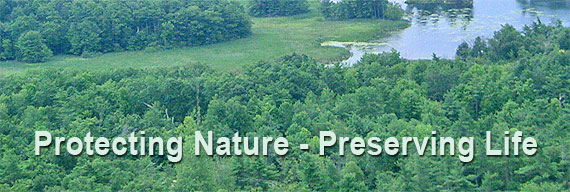| |
Nepal National Parks Information
|
 |
Nepal
is located in Southern Asia, between
Tibet and India. It contains 8 of the world's 10 highest peaks,
including Mount Everest - the
world's tallest - on the border with Tibet.
Nepal is a major tourist
destination, with numerous sightseeing, trekking, and
other adventure sport opportunities. Nepal has a level of tourist
specific infrastructure far in advance of anywhere else in the region.
Here you can trek for a month and stay in guest houses every night, and
need not carry more than a change of clothes or two, and your sleeping
bag.
NOTE:
Nepal has unfortunately been suffering from a Revolutionary Maoist
uprising making the country less than safe.
|
 |
 |
 EVEREST REGION EVEREST REGION |
The
Everest region is officially called Khumbu and includes the Sagarmatha National Park (above
Monju) and the Sagarmatha National Park
Buffer Zone (between Lukla and Monju).
Famous for its spectacular mountain peaks and the loyalty and
friendliness of its inhabitants (the Sherpas), the Everest region
(Khumbu) is one of the most popular destinations for tourists in Nepal.
While many of the routes through the mountains are arduous, there are
ample places to rest and enjoy a meal along the way. Furthermore, don't
worry about getting lost. Just ask a local the way to the next village
on your route, and they will direct you. Most Sherpas under the age of
fifty can at least understand basic English, and many speak it
fluently.
While trekking is possible in this area the whole year round, the
best times to visit are from the beginning of March to mid May and from
the beginning of September to mid November. The winters are very cold
and snow may make it difficult to travel higher than Tengboche, and
also lodges may be closed above this altitude. Summers, on the other
hand, are wet, and the spectacular peaks often lost in the clouds.
April and early May is a good time to see the hedgerows and trees
bursting into bloom, with Rhododendrons, in particular, adding a
spectacular splash of color to the landscape. However, dust from the
plains of India during the spring routinely provide less than ideal
conditions for clear mountain views. The views are much better after
the summer monsoons have cleared the atmosphere of dust, but the days
are shorter and cooler.
Trekking permits are not required for the
Khumbu region.
Lodges and restaurants in Khumbu only accept
Nepalese rupees.
Budget between 600-800rs per person per day for food and accommodation
- prices rise with the altitude, though you may spend more in Namche
because there is more on offer.
The national bird, danfe (a kind of
pheasant), and mountain goats
are common in the Khumbu area, and because the Sherpas do not kill
animals or birds, people can often get very close before they take off.
Musk deer and snow leopards are also natives of the Khumbu mountains,
albeit more rare - keep that camera ready.
IMPORTANT
NOTE: Altitude sickness
affects even young and healthy people and is a genuine problem in
Khumbu. If you feel dizzy, suffer palpitations or a severe headache,
return immediately to lower altitude. Do not take altitude sickness
lightly. It can and does kill!
|
 |
 ANNAPURNA REGION ANNAPURNA REGION |
|
The Annapurna region is an area in western
Nepal
where some of the most popular treks are located. The region is
generally taken to include areas around the Annapurna Range (Annapurna
Himal), the Dhaulagiri Range and the Kaligandaki River valley. Peaks in
the Annapurnas include 8,091m Annapurna I, Nilgiri (7,061 m) and
Machhapuchchhre (6,993 m). Dhaulagiri I (8,167 m) is just to the west
of the Annapurnas, Most of these peaks are visible throughout the
region on clear days.
The Annapurna Conservation Area is also
located in the region.
Among the popular treks in the region are
the Annapurna Circuit
trek which circles the Annapurna Range, the Kaligandaki River Valley
trek which brings you up the world's deepest valley and the Annapurna
Sanctuary Trek up to the Annapurna Base Camp. There are many more
trails for shorter treks. The region includes the Trans-Himalayan areas
north of the main Himalayan Ranges, where the land is arid and the
culture more Tibetan than Hindu.
A permit is required to enter the Annapurna
Conservation Area
Project (ACAP) which encompasses most of the region. Permits are issued
in Pokhara and Kathmandu. You will need to show the permit at police
stations in several towns along the trail.
|
 |
|
|
|
|













